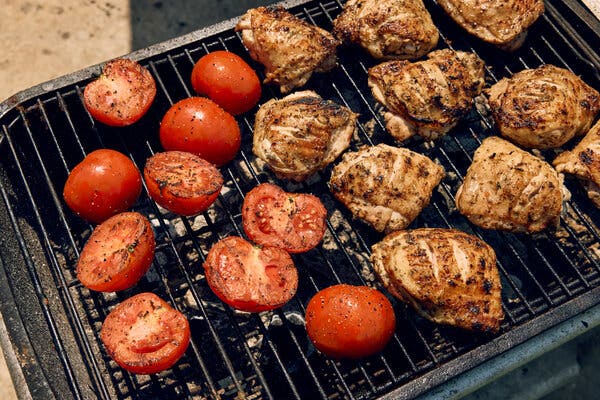A chef offers expert advice on yielding perfectly succulent breasts and thighs (bone-in or boneless) every time.
Grilling dogma dictates that you shouldn’t move meat at all when it’s over the coals. While this advice prevents sticking, tearing and juice loss, those in the trade know that blindly adhering to it eliminates the possibility of a layered crust — and the potential for greatness.
You don’t have to be a professional cook to make irresistible grilled chicken, whether bone-in or boneless. At a carnal level, we all have grill intuition: Our eyes, nose and appetite compel us to turn, flip and plate. What follows is a guide to applying those instincts at the right moment and not before (or after), and many of the lessons apply more broadly to all kinds of meat.
Start with the basics. Heat the grill, clean the grates, place the meat and don’t touch it until it has a confident color and releases graciously. Despite best efforts, some meats never come up without fuss, so use an upturned fish spatula to lift rather than tug on any sticky areas for the first move. Then switch to tongs for the fun part: rotating.
Recipe: Grilled Chicken Thighs With Tomatoes and Basil
Rotate, and rotate again. You’ve probably noticed the crosshatch marks on those juicy sirloins and pieces of chicken in TV ads. Their angles are for vanity, but the extra grill marks are for flavor (more color means more flavor). You want a spectrum of color, from golden to chestnut with some dark dots. With their longer cook time, larger or bone-in cuts give you plenty of opportunity to cultivate this kind of crust, allowing more time to rotate them before they’re cooked. But even one rotation, as you get with smaller, boneless cuts, will do.
Use hot and cool spots to your advantage. If a piece of meat is developing too much color but isn’t yet cooked through, move it to a cooler area of the grill or turn down the temperature. If the crust is looking a little sad but you know the meat is almost cooked, show it intense heat.
Thank you for your patience while we verify access.
